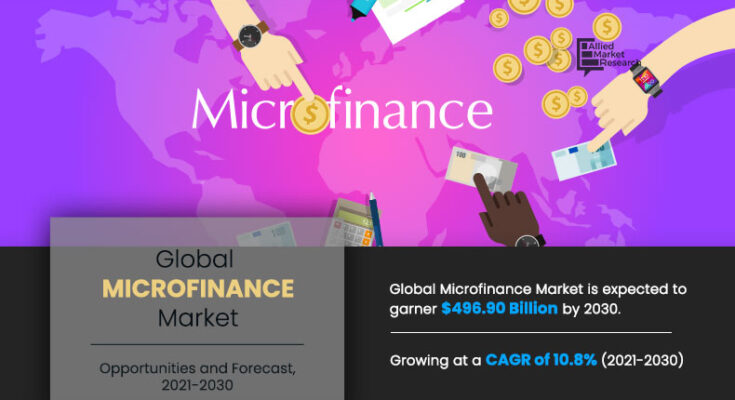The emergence of startups is anticipated to boost the demand for microlending activities across the globe. Moreover, microlending has proved to be beneficial for small businesses & individuals who cannot avail of loans from banks due to either bad credit or small amounts. With microlending financial activities addressing loan requirements of lower-income group population and reaching out to informal businesses, the microlending business is projected to gain traction in years to come.

Reportedly, during the COVID-19 period, there was a prominent surge in the number of people applying for microloans from banks. Currently, peer-to-peer lending has changed the way people carry out business. Popularity of peer-to-peer lending business activities is attributed to the ability of individuals or groups of individuals to issue micro-loans rather than any financial institutes or banks. Citing an instance, Prosper Marketplace, Inc., the U.S.-based firm in the peer-to-peer lending business, provided over $20 billion in form of micro-loans to more than 1.2 million people as of May 2022. According to the report published by Allied Market Research, the global micro-lending market is estimated to generate $343.84 billion by 2027.
Moreover, a large number of lenders pursue one of the two microfinance business models, either the conventional consumer finance business model or the microcredit business model. In the conventional consumer finance business model, lenders compensate for higher default incidences by imposing higher interest rates along with increasing revenues by imposing of penalties and other fees. The microcredit business model focuses on providing informal short-term loans for microenterprises, particularly women-owned microenterprises.
How does microfinance help common people?
None of the two microfinance business models can prove to be ideal for cost-efficiently serving myriad requirements of low-income families and small businesses in a sustainable manner. However, there exists a key opportunity for lenders to chart another path for developing better risk models with the help of big data and high computing power for analyzing big data.
Let us discuss some of the events taking place across the globe.
Microloan offering has become one of the key strategies adopted by the microlending market players for expanding their business along with supporting a social cause such as women empowerment. Since its inception in 2008, Grameen America, a Grameen Bank Affiliate providing loans to poor women in the U.S., offered microloans of over $2.4 billion to more than 150,000 women. Moreover, in May 2022, the organization started campaigns such as Lifting America: The Campaign for Her Future and Elevating Black Women with $100 million funding. Its key objective is to provide loans worth nearly $1.3 billion to over 80,000 black women entrepreneurs by 2030. The strategic move is aimed at encouraging entrepreneurship among women, particularly those who are underprivileged. Such bank-based microloans are projected to enlarge the scope of the microlending business in forthcoming years.
The launching of digital microcredit services has become a major trend among banks in third-world economies to enhance their online presence. As per the digital microcredit scheme launched by The Bangladesh Bank in June 2022, nearly Tk 1 billion refinancing funds are allocated to banks. Moreover, these banks can lend loans ranging between Tk 500 and Tk 50,000 to customers. The initiative is aimed at helping in the expansion of financial products and services for the financial sector in Bangladesh along with addressing the fiscal requirements of the marginalized population of the country.




